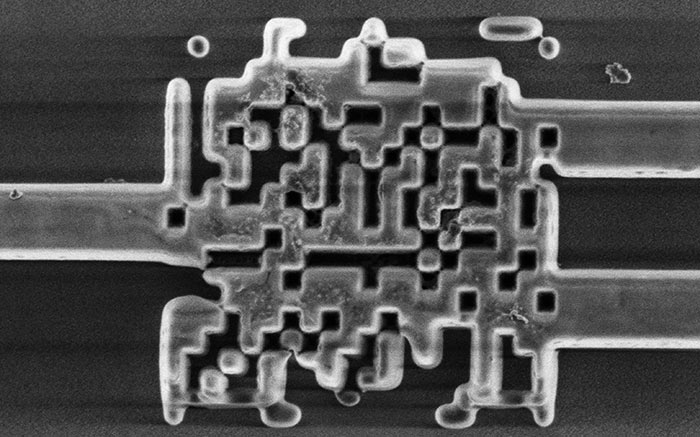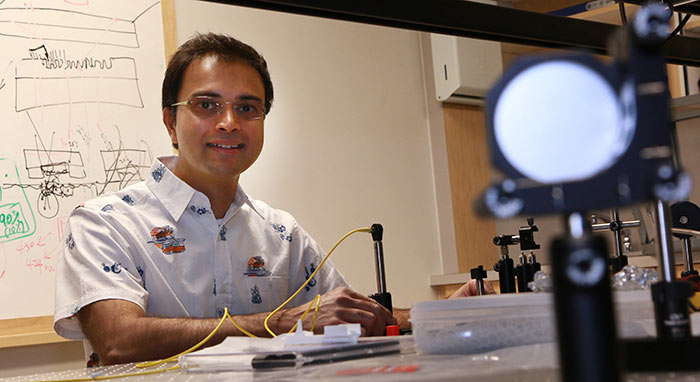University of Utah engineers have developed an ultracompact beamsplitter which is expected to bring silicon photonic chip development a significant step forward. A new algorithm developed by the engineers helped them shrink the size of this key photonic chip component down from over 100 x 100 microns to just 2.4 x 2.4 microns in size – that's one-fiftieth the width of a human hair.

Millions of times faster
The discovery brings researchers closer to producing silicon photonic chips that compute and shuttle data with light instead of electrons. Machines packing such chips could form the next generation of computers and mobile devices "capable of speeds millions of times faster than current machines".
Electrical and computer engineering associate professor Rajesh Menon and colleagues described their invention in Nature, published yesterday. "Light is the fastest thing you can use to transmit information," said Menon. "But that information has to be converted to electrons when it comes into your laptop. In that conversion, you're slowing things down. The vision is to do everything in light." In the example of fibre-optic networks once photons hit the router/computer they must be translated to electrons, which creates a bottleneck. However if this conversion wasn't required - "With all light, computing can eventually be millions of times faster," asserts Menon.

Rajesh Menon
As mentioned in the intro, the new ultracompact polarization beamsplitter will help in the goal of moving computing devices to 'all light'. With the new much reduced size, millions of these devices could fit on a single chip. The beamsplitter is just one of a multitude of passive devices required on a silicon chip - but it is a key component.

Made on existing silicon processes, consumes less power, generates less heat
The new miniaturised beamsplitter technology is expected to be cheap to implement as it utilises existing silicon chip fabrication techniques. Photonic devices will have the advantage of consuming less power, having longer battery life and generating less heat than today's tech.
It is noted that supercomputers featuring silicon photonic components are already in development at firms including Intel, IBM and others. These companies plan to use hybrid processors which use a mix of electronic/photonic components. Within three years the ultracompact polarization beamsplitter developed in Utah should be in use with such machines to further reduce the electronics requirement.













